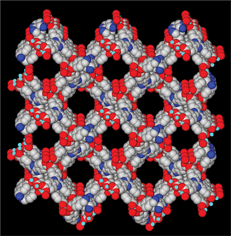Hydrogen storage in metal–organic frameworks†
Abstract
For any potential hydrogen-storage system, raw uptake capacity must be balanced with the kinetics and thermodynamics of uptake and release. Metal–organic frameworks (MOFs) provide unique systems with large overall pore volumes and surface areas, adjustable pore sizes, and tunable framework–adsorbate interaction by ligand functionalization and metal choice. These remarkable materials can potentially fill the niche between other physisorbents such as activated carbon, which have similar uptake at low temperatures but low affinity for hydrogen at ambient temperature, and chemical sorbents such as hydrides, which have high hydrogen uptakes but undesirable release kinetics and thermodynamics.

- This article is part of the themed collection: New energy materials

 Please wait while we load your content...
Please wait while we load your content...